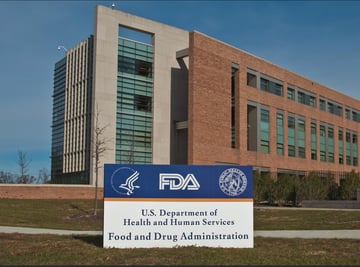The FDA has published the 2020 Leafy Greens STEC Action Plan to combat foodborne illness and outbreaks caused by leafy greens.
The leafy green industry has fallen under intense scrutiny in recent years due to outbreaks like the 2018 romaine lettuce recall and the romaine lettuce E. coli outbreak of 2019. Between 2009 and 2018 alone, the FDA stated they have identified “40 foodborne outbreaks of Shiga toxin-producing E. coli (STEC) infections in the U.S. with a confirmed or suspected link to leafy greens.” The impact of these outbreaks on both public health and food businesses has surfaced persistent vulnerabilities in the leafy greens industry’s food safety practices, which investigations found to be compounded by poor visibility into a complex supply chain.
The Produce Safety Rule, passed under the Food Safety Modernization Act (FSMA), outlines a number of standards for produce as it is grown, packaged and handled. However, the recurrent nature of outbreaks associated with leafy greens coupled with slow mitigation responses to foodborne illness has motivated a new plan from the FDA titled the 2020 Leafy Greens STEC Action Plan, announced on March 5th.
In the New Era of Smarter Food Safety, we can expect to see more robust plans and rules to advance traceability under FSMA. The Leafy Greens Action Plan does not mandate any new requirements for food businesses today, but is designed to, “help foster a more urgent, collaborative, and action-oriented approach.” The plan details three areas for action to build on progress made under the Produce Safety Rule: 1) Prevention, 2) Response, 3) Addressing knowledge gaps. Learn about the outlined plans below.
Prevention
- Advance Agricultural Water Safety
To reduce the risks of microbial contamination of agricultural water, the FDA plans to advance a proposed rule for covered produce and increase emphasis on good agricultural practices (GAPs) for agricultural water. The FDA also plans to work with the Environmental Protection Agency (EPA) on protocols obtaining registration of antimicrobial products. - Enhance Inspection, Auditing, and Certification Programs
The FDA has found gaps in audit standards and certification programs. To address this issue the agency has stated they will prioritize routine inspections as outlined under the Produce Safety Rule, as well as provide technical assistance to enhance audit standards activities. - Buyer Specifications
The FDA is looking to work with food retailers and restaurants to reinforce standards down the supply chain. Ensure your business is prepared for increased vigilance when it comes to supplier audits and assessments, as well as a higher bar for end-to-end traceability. - Leafy Green Data Trust
The FDA is coordinating multi-stakeholder data sharing to leverage work happening in both the private and public sectors to advance smarter prevention efforts and approaches. - Microbiological Surveys for STEC Detection and Enhanced Sampling Protocols
The FDA will be conducting assignments for testing samples of romaine lettuce, particularly in California and Arizona. Additionally, the agency will be examining the best methods and protocols for testing more generally. - Increase Awareness and Address Concerns Around Adjacent and Nearby Land Use
Some factors that contribute to leafy green contamination are related to land use on plots that neighbor agricultural land. The FDA plans to further research the effects of nearby land use, as well as educate and support industry stakeholders and government partners. - Establish/Strengthen Regular Outreach and Communication Programs for Stakeholders in Growing Regions
Given the diversity of U.S. growing regions, the FDA is planning increased region-specific communications.
Response
- Publish Salinas Outbreak Investigation Report
Investigations into major outbreaks provide insights into supply chain vulnerabilities and help guide future prevention and response efforts. The FDA will be releasing an outbreak investigation report in 2020, including traceback and sampling activities conducted in the Salinas Valley growing region of California. - Conduct Follow-Up Surveillance During the Fall 2020 California Growing/Harvest Season
Given the severity and frequency of outbreaks linked to romaine from the California growing region, the FDA plans to increase surveillance of that region and leafy green product. - Promote Tech-Enabled Traceability
The FDA has acknowledged a food safety ceiling if the industry does not embrace modernized traceability capabilities. The agency will issue a proposed rule for implementing FSMA Section 204 relating to documentation and tracking and tracing food products. They will be prioritizing work with the leafy greens industry to advance tech-enabled traceability. - Improve Utilization of Shopper Card Data
Shopper cards provide an opportunity to close the loop between consumer and upstream supply chain events. The FDA plans to work more closely with retailers during investigations to improve traceback efforts. - Accelerate Whole Genome Sequencing Data Submission by States
Whole genome sequencing (WGS) is a modern tool that can also help traceback efforts, in addition to fundamental understanding of pathogens and clinical cases related to foodborne illness. The FDA plans to work with the Center for Disease Control and Prevention (CDC) to reduce processing and public record submission time. - Advance Root Cause Analysis Activities
When outbreaks occur repeatedly with specific leafy greens, it is important to understand the causal elements of the outbreak. The FDA has committed to improving these efforts using new models, tools and increasing response time once the source of an outbreak is identified. - Enhance Outbreak and Recall Communications
Recall communications can reduce the impact of outbreaks significantly. The FDA says, “Communications during outbreaks are essential for spurring swift industry action and notifying consumers of potentially contaminated products.” They will be focusing on mechanisms and enhancements for recall communications. Businesses can reduce their own product and stock withdrawal times ten-fold by adopting food recall software and practicing mock recalls.
Addressing knowledge gaps
- Conduct Longitudinal Studies
The FDA is offering greater support to large research initiatives that further the basic science behind foodborne illness and leafy green outbreaks. In 2020 they will support two longitudinal studies specific to the Yuma and Salinas growing regions. - Data Mining and Analytics on Previous Outbreaks
Analytics can uncover deeper insights into past outbreaks and provide more sophisticated views into foodborne illness prevention. The FDA will be collaborating with the CDC to mine data and research the factors that may have contributed to past outbreaks. - Adjacent and Nearby Land Use
In addition to increasing awareness around adjacent and nearby land use, the FDA is committed to researching relational factors of land use close to agriculture. - Compost Sampling Assignment with California
The soil used for leafy greens may be vulnerable to pathogen transference during composting processes, particularly when soil amendments are sourced from animals. The FDA has stated that part of addressing knowledge gaps under the action plan will be to work towards understanding various composting techniques through sampling.
The 2020 Leafy Green Action Plan outlines a series of action items the FDA and other industry stakeholders can take to reduce the number of serious produce recalls that occur each year. As the year continues, companies should expect more resources on how they can modernize their supply chain to mitigate food safety risks. In September of 2020, the FDA has also indicated they will be announcing plans for a new rule on traceability. Prepare for more advanced food transparency requirements by getting started with whole chain traceability today. Request a demo for FoodLogiQ's Track + Trace here.
Tag(s):
Industry Regulations
Other posts you might be interested in
View All Posts
Recall
3 min read
| August 6, 2019
Consumer Reports Finds Listeria Following Leafy Green Tests; FDA to Review the Publication’s Data
Read More
Food Industry
7 min read
| October 9, 2018
FDA Takes Commitment to Consumer Safety and Public Health to Next Level with New Food Recall Policies
Read More
Food Industry
14 min read
| October 19, 2023

